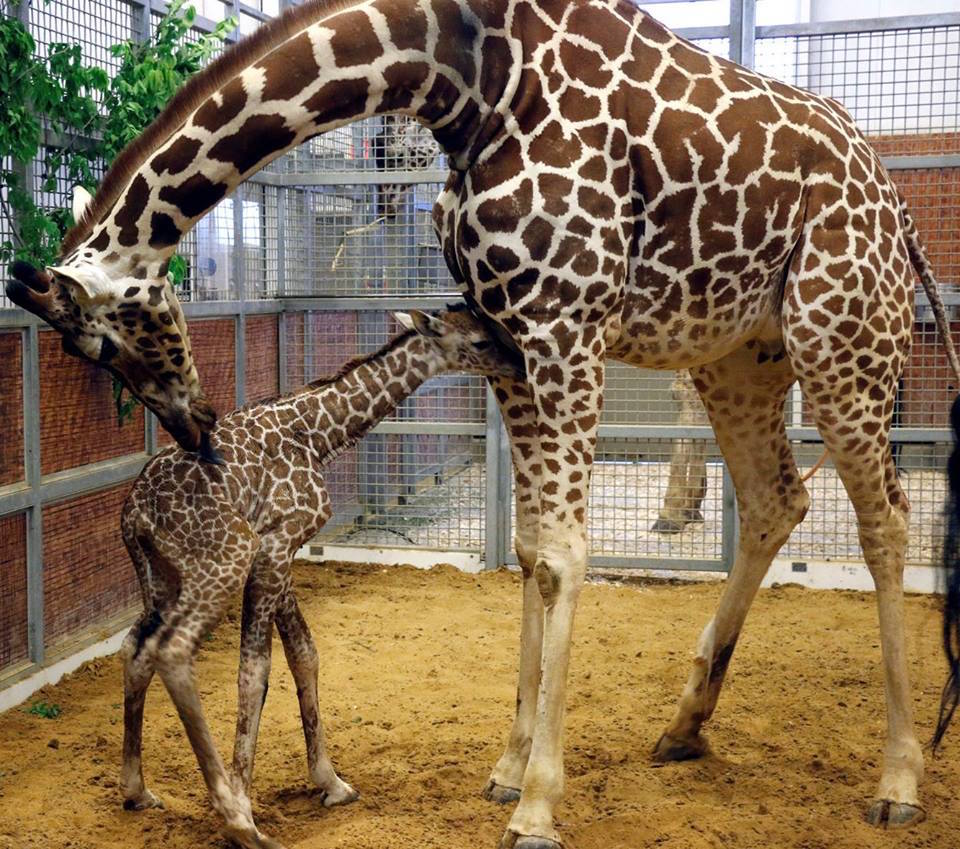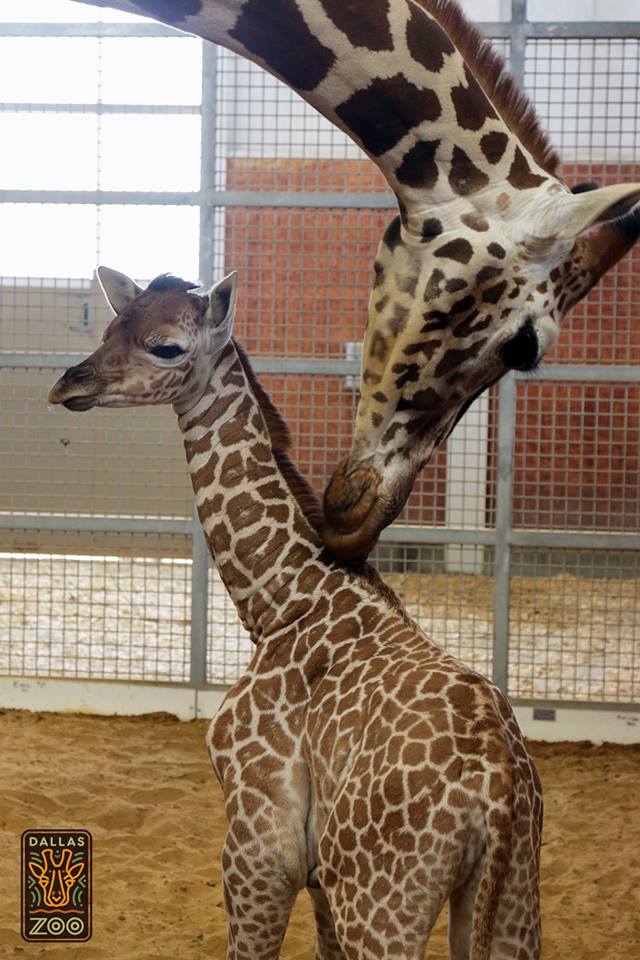It's a Girl! Healthy Giraffe Born at Dallas Zoo

The giraffe born at the Dallas Zoo last week is a healthy baby girl, according to a zoo spokeswoman.
The spindly-legged bundle of joy weighs 139 lbs. (63 kilograms) and stands 5 feet 10 inches (1.8 meters) tall, said Laurie Holloway, the Dallas Zoo's director of communications and social media.
A giraffe named Katiegave birth to the calf on Friday (April 10), and the event was streamed live online. The zoo is holding a public vote to name the calf later this week, Holloway told Live Science. [In Photos: See Cute Pics of Baby Giraffes]
Animal Planet installed 10 cameras in the zoo's maternity barn to give at-home viewers a chance to witness the remarkable event live and learn about the state of these animals in the wild.
"Showing this birth also allowed us to teach about giraffes, including how threatened they are in Africa," staff members said in a Q&A on the zoo's website. "We hope that will convince more people to get involved in conservation efforts with the groups with which we partner to help preserve giraffes in the wild."
The newborn calf is not on display to the public yet because rainy weather has made the outdoor habitat muddy, which could be dangerous if the baby giraffe were to fall, zookeepers said. But once the weather clears up, the baby will be let out to play.

How giraffes are born
Sign up for the Live Science daily newsletter now
Get the world’s most fascinating discoveries delivered straight to your inbox.
A giraffe's gestation period typically lasts 15 months, according to Animal Planet. Giraffes give birth standing up, and the baby falls about 6 feet (1.83 m) to the ground. The fall breaks the amniotic sac, a fluid-filled pouch that protects a developing fetus, severs the umbilical cord and encourages the calf to breathe on its own, Holloway said.
Katie gave birth in a specially prepared maternity stall, outfitted with 6 inches (15 centimeters) of soft dirt to cushion the baby's fall, Holloway said. So far, the calf has been nursing normally, according to zoo staff. She will continue to get milk for nine to 12 months but will begin to eat solid food (leaves) within four months.
Zookeepers will select three names for the calf, and members of the public will be able to vote on their favorite choice later this week. The zoo typically names its animals in the language of their native country.
The new calf's father is a giraffe named Tebogo. This is not Katie's first calf — she already has a 4-year-old calf named Jamie, according to zoo staff.
Giraffes are not endangered, but their numbers in the wild are decreasing. About 80,000 wild giraffes live on the African continent — down from 140,000 animals in 1999, according to the International Union for Conservation of Nature. The reticulated giraffe (the subspecies to which Katie and her calf belong) has an estimated population of 4,700 — down from an estimated 31,000 in 1998, according to the Giraffe Conservation Foundation.
Follow Tanya Lewis on Twitter. Follow us @livescience, Facebook & Google+. Original article on Live Science.











